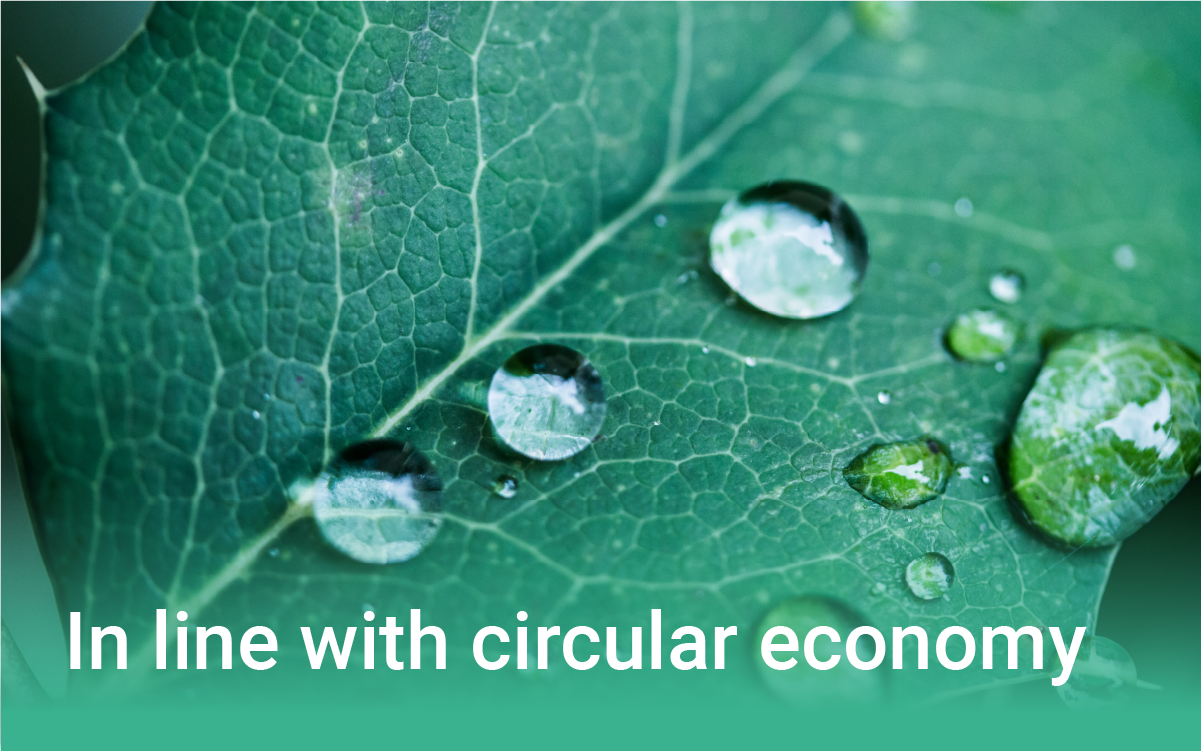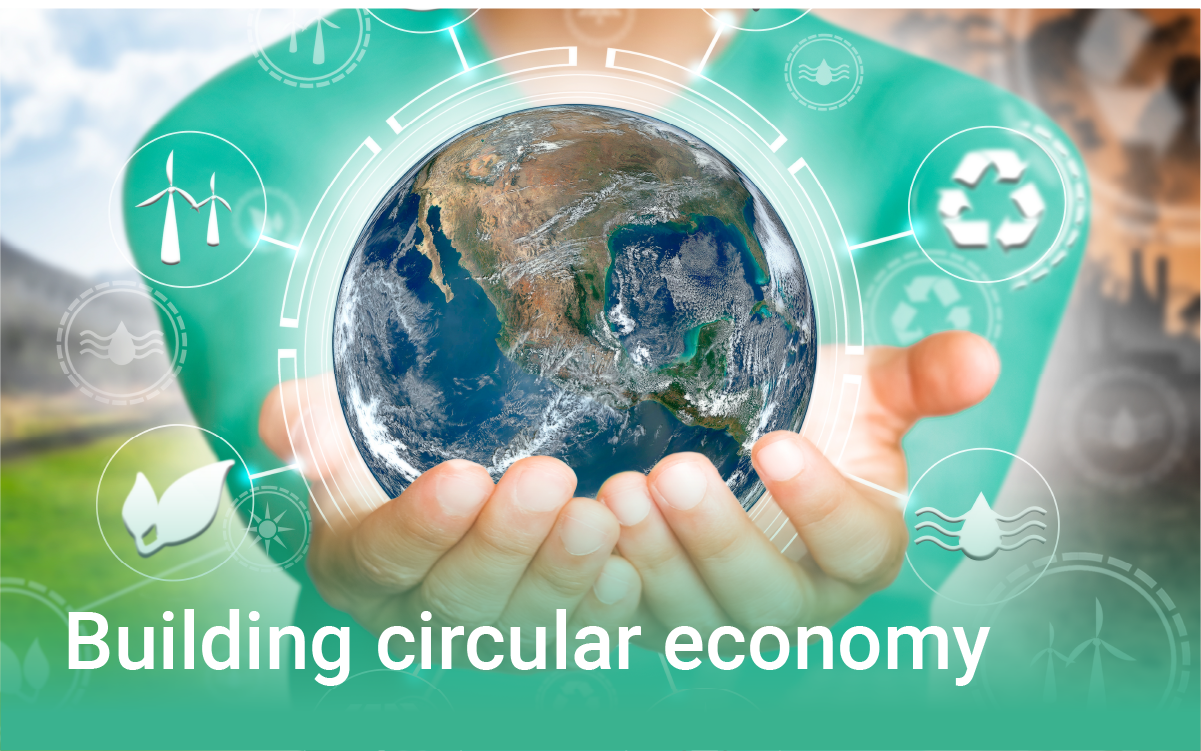Circular packaging with ALFAPURA®
ALFAPURA®‘s sustainable adhesives are an important component for recyclable end products. Together, we are realizing the vision of a waste-free economy, entirely without materials that are harmful to health or the environment. Reto Stoppa has been working for ALFA Klebstoffe AG for over 10 years in the international sales of dispersion and hot melt adhesives for the packaging industry. As a lecturer, he passes on the expertise he has gathered over the years to future specialists in the packaging industry. In this interview he shares some insights into his exciting work on circular packaging.
Mr. Stoppa, as an adhesives expert for packaging, you are dealing with questions of sustainability. What opportunities do you see for the future?
The sustainability of packaging has become a bigger and bigger issue in recent years. Unfortunately, packaging is sometimes denounced as “unnecessary waste” or as a cause of marine pollution. Yet they are indispensable, as every consumer wants to buy the goods intact or the food well protected. Given new country-specific or EU-wide legislation, packaging manufacturers are now challenged and must find solutions to redesign their packaging. Changes are already clearly visible, be it through the avoidance of plastics, the design of packaging made of mono-material or easily separable materials, design for recycling or even making the packaging as a whole recyclable. We chose to produce adhesives for recyclable goods based on the Cradle-to-Cradle concept and to provide certified circular packaging to our customers.
Can you elaborate on the circularity? What principles does the circular economy follow?
Circularity according to the Cradle-to-Cradle principle is based on the concept that no resources end up as waste but retain their value in a technical or biological cycle. Consumer goods in the technical cycle are designed from the outset so that the individual materials of a product can be easily separated and reused. Consumer goods in the biological cycle can be safely returned to the biomass or do not cause any harmful (waste) products in already established recycling processes such as paper or cardboard – neither for humans nor the environment. This harmlessness is proven by the Material Health Certificate, which is issued after precise scientific analyses of materials with a corresponding status.
The way to recyclable packaging is getting easier and easier and with ALFAPURA® we provide another piece of the puzzle for this.


Do you already have a recyclable adhesive solution?
Yes, we have recyclable adhesives according to the Cradle-to-Cradle principle. Originally initiated by a customer request in 2017, we have followed this path and in close cooperation with the Cradle-to-Cradle Products Innovation Institute and EPEA Switzerland, we received the Material Health Certificate Status GOLD in July 2020. Our certified adhesives bear the name ALFAPURA® and this adhesive series is an entire portfolio for various industries, which is constantly being expanded according to customer needs.
What was the challenge in developing a recyclable adhesive?
The first big challenge was to fully understand the whole principle and to implement the requirements in this respect in our adhesive development. Above all, the raw material evaluation presented us with a major task since we could not fall back on any existing standards or certificates. These were simply not available from the raw material suppliers. It was an intensive process to implement the requirements of Cradle-to-Cradle in the evaluation of raw materials and to obtain the necessary information from the raw material suppliers so that the adhesive could be certified as a complete product.
For which industries can you offer ready-to-use adhesive solutions for ALFAPURA®?
In the beginning, we concentrated on adhesives for the post-printing industry, as we also had specific inquiries in this area. However, we quickly recognized the potential in circular packaging and adhesives for wood bonding, where we can now offer various functioning solutions. Parallel to this, developments are underway for hygiene products such as cotton buds as well as for the textile sector. The future will show which additional applications, perhaps still unknown to us, will be desired by the market. We are ready to take on these challenges as well.
If I change production to be recyclable, do I have to change my machines?
No, not at all. With our experience in application technology, we have included the compatibility of the adhesives with the usual application systems in the development right from the start. The changeover to ALFAPURA® is thus guaranteed without any additional effort or new investments.
What are the advantages of switching to recyclable products?
First and foremost, a significant contribution to environmental protection and resource conservation. In the longer term, we see a new generation of consumers who want to consume in an environmentally conscious way and prefer environmentally friendly products also in environmentally friendly and circular packaging. We are convinced that packaging manufacturers will also create a significant market advantage in the future if they can offer certified, recyclable products.
What is your conclusion?
Many certified materials such as printing ink or paper are already available in the packaging sector. The way to recyclable packaging is getting easier and easier and with ALFAPURA® we provide another piece of the puzzle for this. We hope to be able to support many new manufacturers and together create a future with circular packaging. Our children and grandchildren will be grateful for this.
Secure your personal appointment
Do you need support or advice? We love to share our know-how. Schedule your appointment now!
Read more articles
Improve your sustainability with the Cradle-to-Cradle-Approach
Circular economy, sustainability, and eco-friendliness have become central issues in the production industry. If more sustainable products have also become your goal, ALFAPURA® adhesives can help you reach it.
Why green manufacturing is the future
With ALFAPURA® your manufacturing becomes greener and your products more in line with a circular economy. We set as our goal to support the push for an eco-friendly circular economy and green manufacturing.
The philosophy of circular plus®
The online network circular plus® has set the goal to unite and document as many projects as possible and make their ideas available for everyone. ALFAPURA® has now become part of circular plus®




